Art Fairs
5 Standout Artworks at Art Basel Hong Kong, From a $27,000 Charging Bull to a Photograph Capturing the End of a Soviet Era
The show offers a good chance to see works by artists you may not see at other fairs this year.
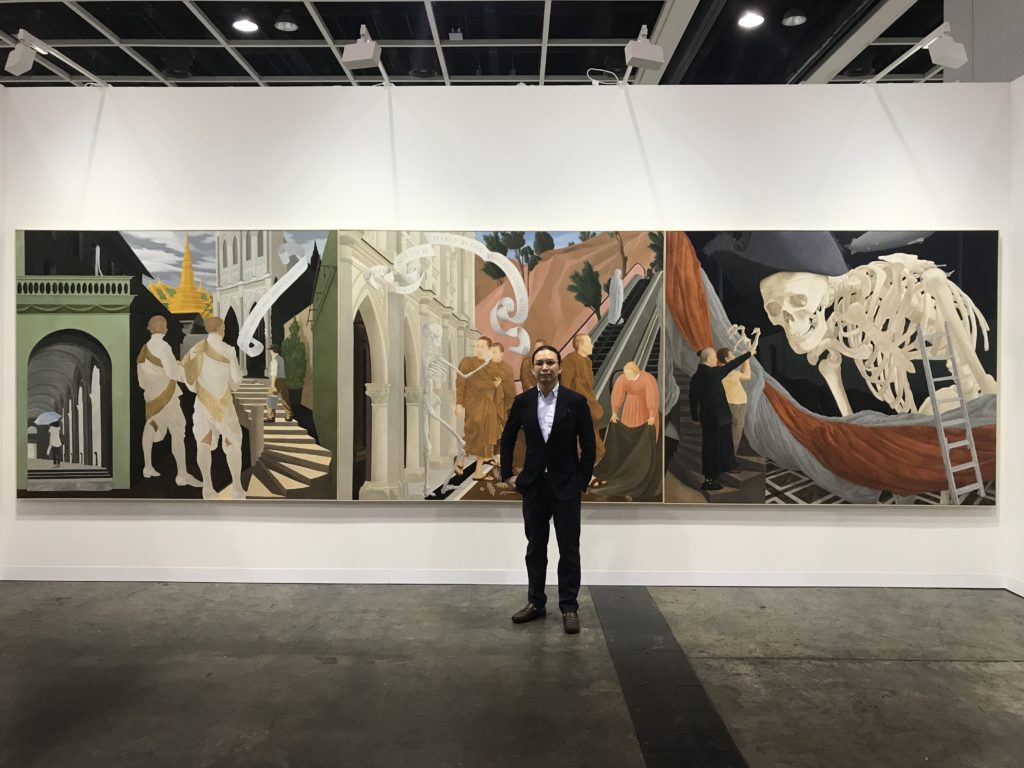
The show offers a good chance to see works by artists you may not see at other fairs this year.

Andrew Goldstein

Rudyard Kipling wrote “East is East, and West is West, and never the twain shall meet.” But clearly he never visited Art Basel Hong Kong, where East and West not only meet, they meld, morph, and mutate into something ever-changing and new.
Few of the Asian artists on view at the fair are ignorant of the Western influences in their work, often showing a preoccupation with the rich legacy of European and American art. And while you can hardly say that the Western artists have taken a similar interest in the art of their Asian counterparts, their dealers have certainly become fixated on the money that’s flowing out of the region’s economy and into the pockets of its expanding collector class.
For any American visitor to Art Basel Hong Kong, it’s wise to skip over the known Western names displayed in the booths—even though there are a few riveting new David Hockneys—since you’ll see them again and again at other fairs throughout the year. Instead, here are five of the best works on view by artists from Asia, each of which, notably, is a fusion of East and West.
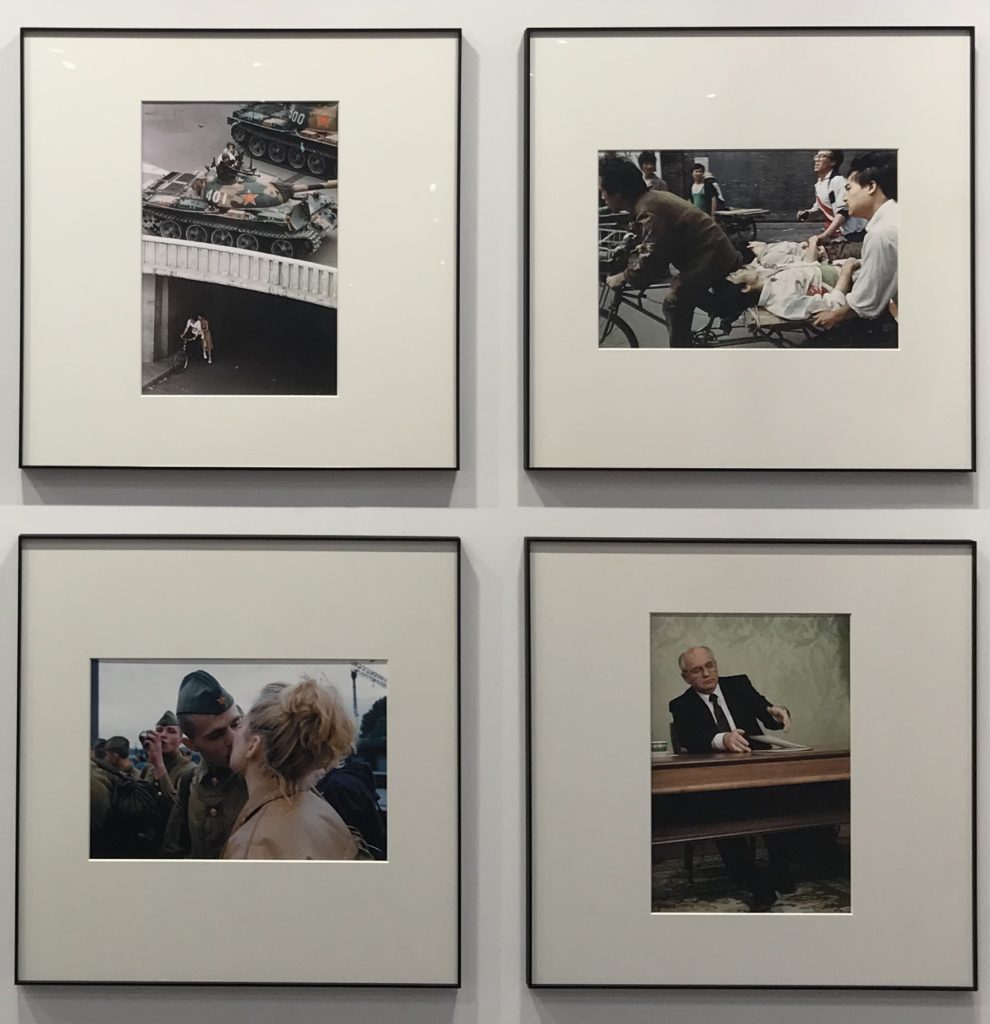
Photojournalists are Zeligs by trade, dispatched to witness history’s most momentous events as part of a day’s work. But even so, the photographer Liu Heung Shing seems to have an extra bit of kismet attached to him.
Born in Hong Kong in 1951, he traveled to New York to receive his education at Hunter College and then won an apprenticeship at LIFE, where he fell in with the magazine’s fabled band of photographers. Getting a job at its sibling TIME, and then with the Associated Press, Liu was sent abroad and eventually made his way to Beijing following the death of Chairman Mao in 1976, chronicling first the gradual opening up of China under Deng Xiaoping and then the brutal crackdown on the pro-democracy movement of Tiananmen Square in 1989. Soon thereafter, he made his way to Moscow, just in time to document the dissolution of the Soviet Union—a body of work for which he won the Pulitzer Prize in 1992.
At the fair, Beijing’s Star Gallery has brought a breathtaking suite of photographs from this turbulent period, where history seems to unfold once again across the grid of images: a tank rolls across a bridge in China’s capital as a couple hides in the underpass; bloody students are evacuated from Tiananmen Square by bicycle; an Estonian kisses his girlfriend goodbye as he is mobilized into the Soviet army; Gorbachev throws down his speech on a table after the televised announcement of his resignation as the head of the Soviet Communist Party.
Now the founder of the Shanghai Centre of Photography, Liu is an éminence grise of photographers in China (though these days he takes most of his photos on his iPhone) and his work is now beginning to be viewed as art, classics of its genre. Since he began working with Star Gallery two years ago, his work has been bought in bulk by the new M+ museum, and now the Tate and other international institutions are expressing interest as well. As for Liu’s Tiananmen pictures, they are forbidden to be shown in Beijing, but Hong Kong remains uncensored. “Up ’til now it’s fine,” said a gallery dealer. “The organizers don’t have a problem.”
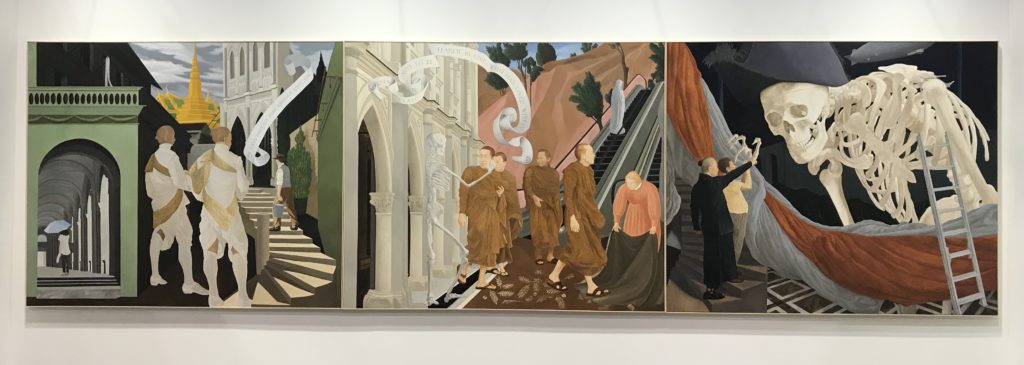
Unlike other Asian countries, Thailand never fell into the grip of Europe’s colonial powers—but that doesn’t mean its citizens are immune to the “civilizing” influence of the West. This fact has long preoccupied the Thai painter Natee Utarit, who studied art at Silpakorn University, a distinguished Bangkok school that was founded in 1943 by the Florentine sculptor Corrado Feroci. Ever since, Utarit has struggled to make sense of the balance between his Italianate art training and his native culture. In the paintings that line the walls of Richard Koh Fine Art’s booth, this struggle plays out in an exceedingly beguiling way: in scene after scene, rendered in the dusky pastels of the Florentine Renaissance, Asian figures wander through Italian piazze, where they are confronted by the ghosts of colonialism—sometimes in the terrifying form of the gashadokuro (or Japanese “hungry skeleton”), other times in a friendlier guise, like the German artist Joseph Beuys.
“My work is about the relationship and conflict between European colonialists and Asian culture that still exists in the Asian mind,” the artist, who was present at the fair, put it bluntly. “Why do Asians today like the past of Western cultures so much? My paintings ask the question.”
Western culture, for its part, seems interested in that question as well. Utarit’s paintings are now destined for shows in Norway this September, and in Naples in October.
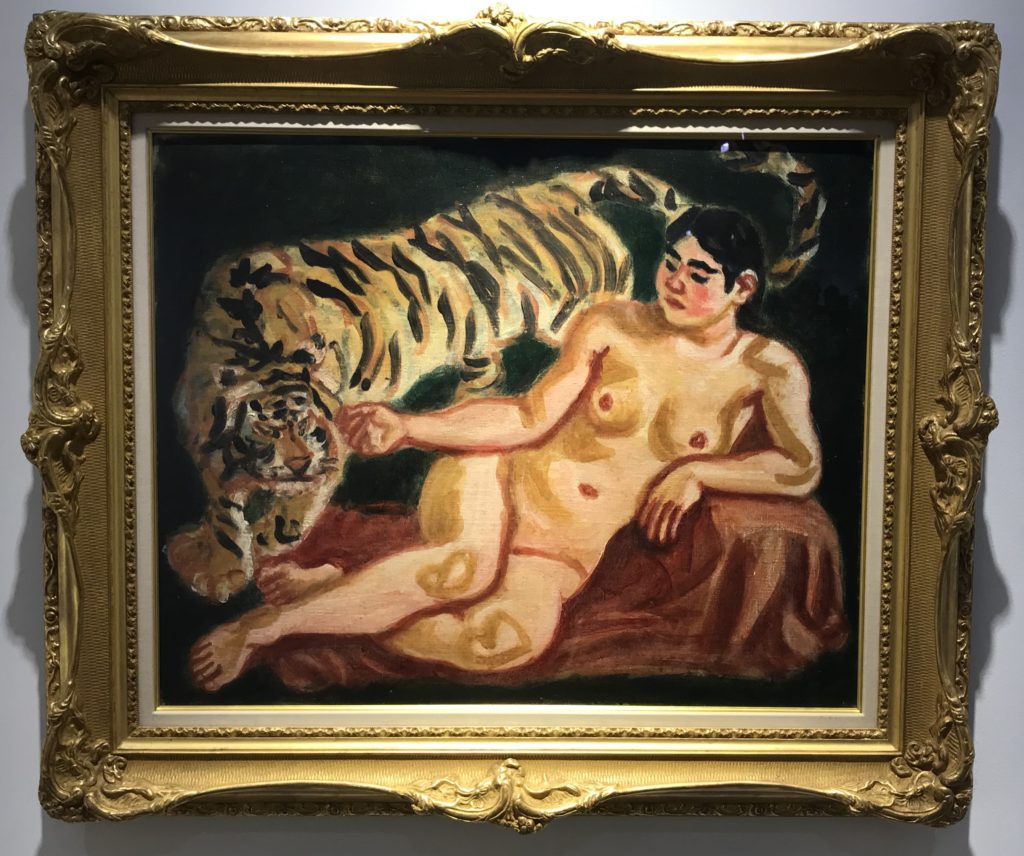
Born in Kyoto in 1888, the Japanese artist Ryūzaburō Umehara traveled to Paris when he was 21 and studied painting under Pierre-Auguste Renoir, who taught him Impressionist brush strokes, a honeyed way of treating the flesh, and, above all, how to use oil paint on canvas—a very different way of creating art from the traditional nihonga style of laying down pigments on silk or paper. When he later returned to Japan, Umehara became a famous proponent of this Western style of painting, known as yōga, and founded two artist groups, Nikakai and the Shuń yōkai; he then became a professor of art at Tokyo University.
With its nude Japanese sitter and tiger motif, this painting is another fusion of East and West, though one far less questioning than Utarit’s haunted canvases. It’s no surprise that Umehara’s auction record of $2.4 million was set at Sotheby’s Tokyo in spring of 1990, the heady peak of the Japanese art boom, when the country’s magnates were snapping up Van Goghs and Monets left and right.
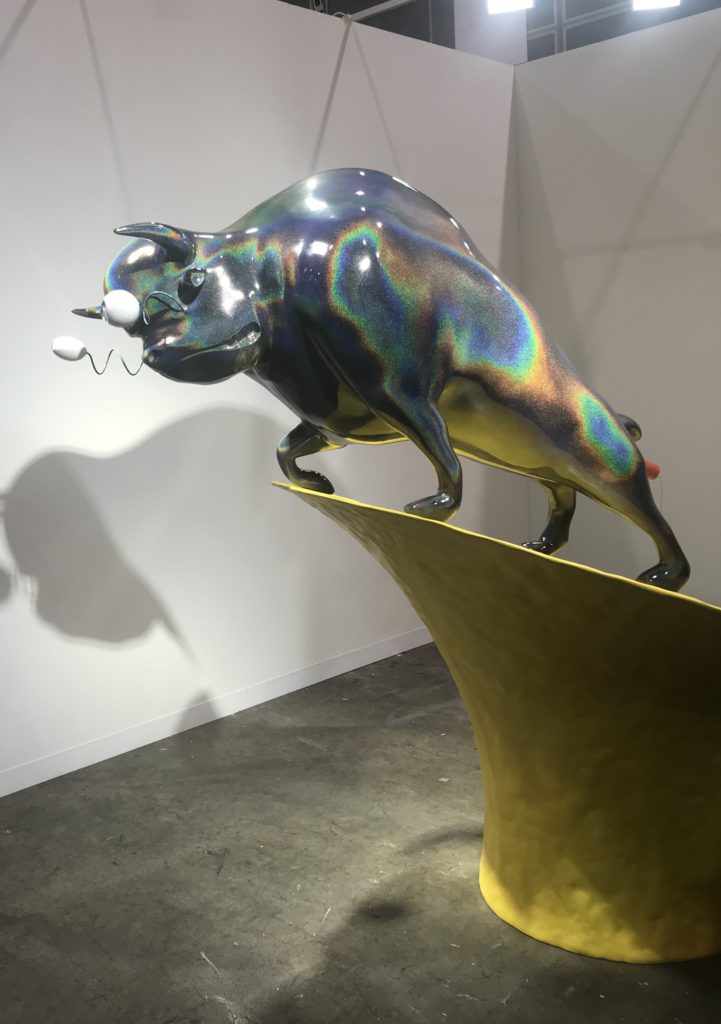
The tech-industry powerhouse city of Shenzhen sits just across the Ng Tung River from Hong Kong and is famous for its rampaging economy, which last year outpaced Hong Kong’s for the first time, and which is represented by a ferociously aggressive bull sculpture that stands outside the Shenzhen stock exchange. Having grown up in that city, the three artists who comprise the collective Jiu Society—Fang Di, Ji Hao and, Jin Haofan—take a skeptical view of such economic bellicosity, and here have created a bull of their own (with a deliberate nod to Arturo Di Modica’s Charging Bull on Wall Street) that they feel better represents these uncertain times.
Shiny as a custom car, the bull charges blindly up to the edge of a cliff, its eyeballs dangling uselessly out of its sockets, spurred onward by a giant red firecracker jammed up its butt. As economists predict a possible global recession this year, Jiu Society’s hapless animal may prove a prescient mascot should we all fall over the precipice once again.
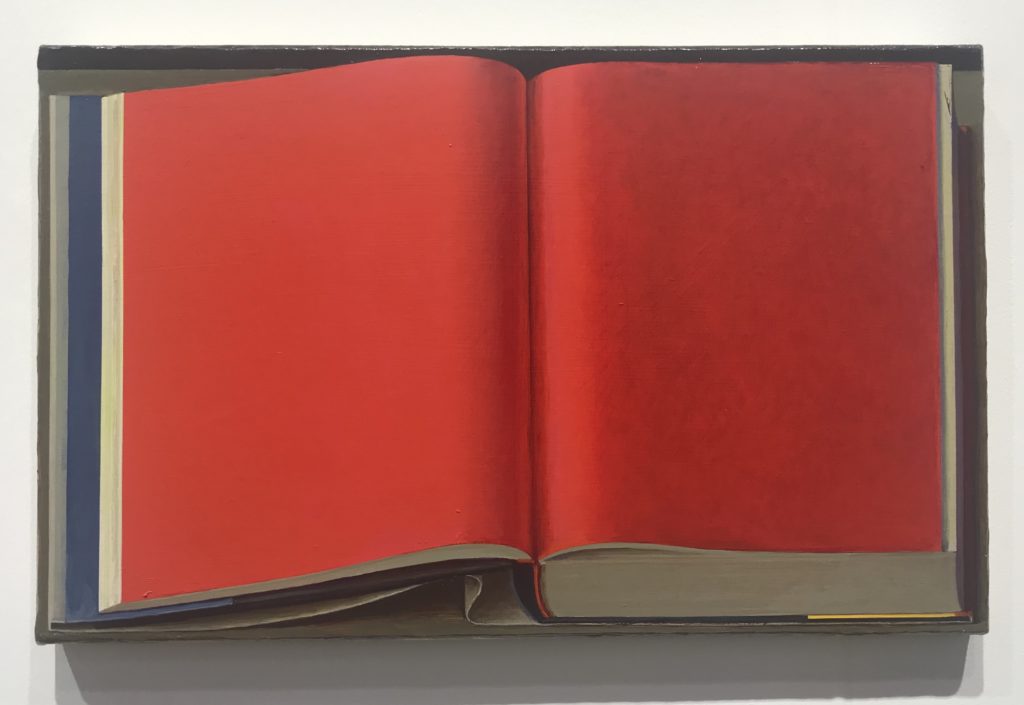
Leading Western galleries have been on a tear recently to sign new Chinese artists to their rosters, from Gladstone (the outsider artist Guo Fengyi) to Gagosian (Jia Aili and Hao Liang) to Greene Naftali (Gang Zhao). For its new addition, David Zwirner Gallery opted for an artist who fits squarely in its comfort zone: Liu Ye, a Beijing-born painter who studied in Germany (and speaks German). The artist is influenced by European Modernists such as Mondrian and the Bauhaus school, has a terrifically hot market (his record of $5.5 million was set a Sotheby’s Hong Kong a few years back), and has unimpeachable curatorial credibility (he was featured in the last Venice Biennale).
Known for painting cute children, sometimes toting swords, and childlike women, often in erotic scenarios, he is also enamored of books (his father is a children’s book author, his mother a schoolteacher) and he includes them in many of his paintings, lovingly rendering them in luscious paint. This particular book painting, which Zwirner brought to Hong Kong to mark the artist’s entry to the gallery stable, has some extra added significance: featured in the artist’s Venice Biennale presentation, it is also the final work in his 1991–2015 catalogue raisonné, so selling it through the gallery here marks the turning of a page, and the opening a new chapter in the artist’s career.